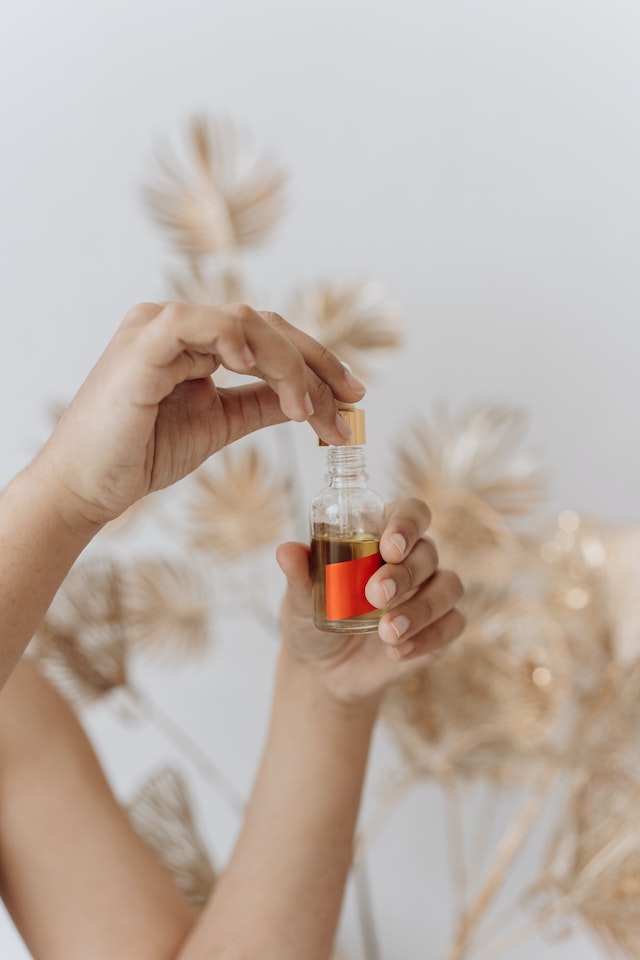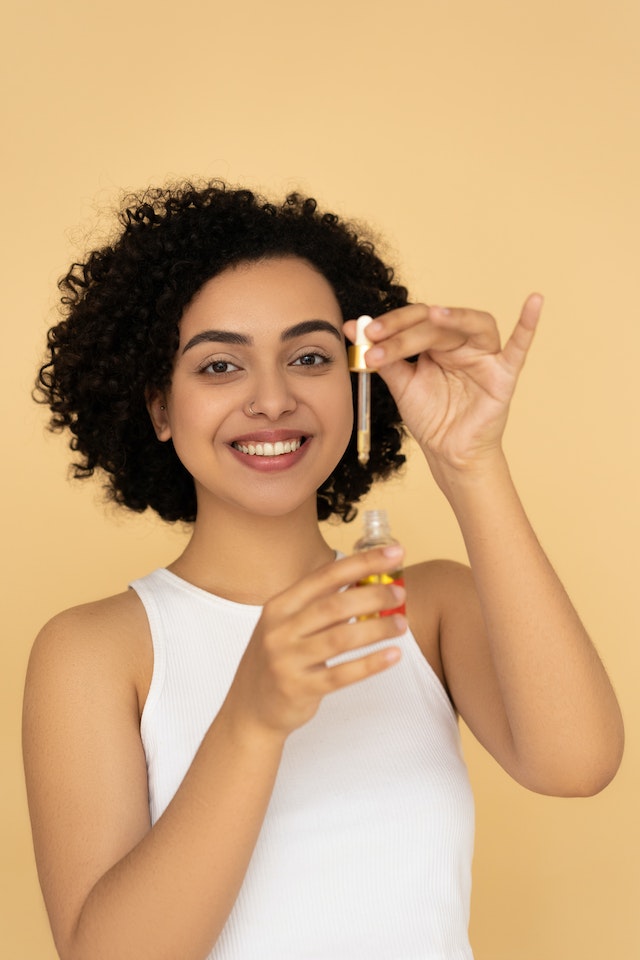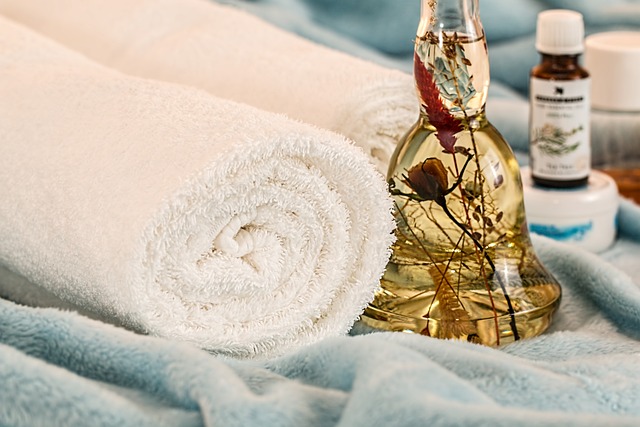
The alluring scents and natural healing properties of essential oils have been used for centuries to promote positive physical and mental well-being. From the cool and refreshing fragrance of peppermint to the warm and calming aroma of lavender, there is an essential oil for every need.
One of the most popular uses of essential oils is in aromatherapy. By diffusing the oils into the air, the fragrances can promote relaxation, reduce stress, and improve mood. Lemon essential oil is known for its uplifting scent, while eucalyptus is great for helping to clear congestion and promote respiratory health.
Essential oils can also be used topically when diluted with a carrier oil such as coconut or almond oil. This method is great for targeting specific areas of the body and can help reduce pain and inflammation. Chamomile is excellent for soothing skin irritations, while frankincense is known for its anti-aging properties.
In addition to aromatherapy and topical use, some essential oils can also be ingested. However, it’s important to note that not all oils are safe for internal use and it’s crucial to consult with a qualified professional before ingestion. Some popular options for ingestion include peppermint for digestive support and lemon for detoxification.
How Essential Oils Are Extracted
Extraction methods for essential oils vary depending on the plant material and desired outcome. Here, we explore some common techniques used to obtain these precious oils:
- Steam Distillation: This is the most widely used method and works by passing steam through the plant material. The steam causes the essential oil glands to burst, releasing the aromatic compounds. The steam and essential oil mixture then flow into a condenser where they are cooled and separated. The resulting liquid is a mixture of essential oil and water, which can be further processed to separate the oil.
- Cold Pressed Extraction: The cold pressed method is primarily used for obtaining essential oils from citrus fruits, such as oranges and lemons. The fruit peel is mechanically pressed, releasing the essential oil along with colorful citrusy compounds. The oil is then separated from the rest of the fruit juice and other components.
- Solvent Extraction: This technique is often employed for delicate flowers, such as jasmine or rose. The plant material is mixed with a solvent, usually a food-grade alcohol, which dissolves the essential oil. After the mixture is evaporated, the remaining substance is a waxy solid called a concrete. To obtain the pure essential oil, the concrete is mixed with alcohol, which evaporates, leaving behind the aromatic oil.
- Carbon Dioxide Extraction: Also known as supercritical fluid extraction, this method involves exposing plant material to pressurized carbon dioxide. Under specific conditions, carbon dioxide behaves both as a gas and a liquid, allowing it to extract the essential oil. The resulting product is free from solvent residues and is considered of high quality.
It is important to note that not all methods yield the same quality of essential oil. Factors such as the type of plant material, extraction technique, and the skill of the distiller can affect the potency and fragrance of the final product. Therefore, it is essential to choose oils that are sourced from reputable and experienced producers to ensure the best results.
Types of Essential Oils
When it comes to essential oils, the choices are seemingly endless. Each oil possesses its own unique properties and benefits. Here, we explore some of the most popular and versatile essential oils available:

Lavender Oil:
Known for its calming and soothing properties, lavender oil is a staple in many households. Its gentle floral scent promotes relaxation and can help ease anxiety and insomnia. Lavender oil is also renowned for its skincare benefits, often used to relieve sunburn, heal minor cuts, and nourish dry skin.
Peppermint Oil:
With its invigorating and minty aroma, peppermint oil is a powerful stimulant. It can help boost energy levels, improve concentration, and alleviate headaches and migraines. Peppermint oil is also widely used to ease digestive issues and relieve muscle pain and tension.
Tea Tree Oil:
A popular choice for its potent antiseptic and anti-inflammatory properties, tea tree oil is often used to treat skin conditions such as acne, cuts, and infections. It can also help soothe insect bites and relieve scalp irritations. With its fresh, medicinal scent, tea tree oil is a versatile addition to any essential oil collection.
Eucalyptus Oil:
Renowned for its refreshing and invigorating aroma, eucalyptus oil is a go-to oil for respiratory health. It can help clear congestion, relieve sinus pressure, and promote easier breathing. Eucalyptus oil is also commonly used in massage to soothe sore muscles and reduce inflammation.
Lemon Oil:
Known for its uplifting and citrusy fragrance, lemon oil is highly valued for its cleansing and detoxifying properties. It can help purify the air, boost mood, and enhance mental clarity. Lemon oil is also great for supporting healthy skin and digestion.
Frankincense Oil:
With its warm and woody scent, frankincense oil has been used for centuries in religious ceremonies and meditation practices. It is believed to promote relaxation, reduce stress and anxiety, and deepen spiritual connection. Frankincense oil is also known for its skincare benefits, helping to reduce the appearance of wrinkles and scars.
Aromatherapy
Aromatherapy, the art of using essential oils for therapeutic purposes, has gained widespread popularity in recent years. By harnessing the power of aromatic plant extracts, aromatherapy aims to enhance physical, emotional, and mental well-being. The use of essential oils in this practice can be traced back thousands of years to ancient civilizations such as the Egyptians, Greeks, and Chinese.
Aromatherapy works through the olfactory system, where the fragrances of essential oils are deeply inhaled and processed by the brain. These scents have a direct impact on the limbic system, the area responsible for emotions, memories, and behavior. Depending on the chosen essential oil, aromatherapy can promote relaxation, reduce stress, improve focus, uplift mood, or invigorate the senses.
There are several methods to enjoy the benefits of aromatherapy:
- Diffusion: Diffusion is one of the most popular methods of using essential oils in aromatherapy. By dispersing the oils into the air, either through an electronic diffuser or by adding a few drops to a bowl of hot water, the fragrances are released into the surrounding space. This allows for easy and widespread inhalation, benefitting both the mind and body.
- Inhalation: For a more direct and intense experience, inhalation of essential oils can be achieved by placing a few drops on a tissue or inhaling from an inhaler stick. Whether seeking relaxation or an energy boost, inhaling the aromatic molecules can have an immediate impact on mood and emotions.
- Topical Application: Essential oils can be diluted with carrier oils such as coconut or almond oil and applied to the skin. Massage, in particular, is a popular method of topical application. The oils are absorbed through the skin, promoting physical and mental relaxation while also targeting specific areas of concern, such as muscle tension or skin irritations.
While essential oils offer numerous benefits, it is essential to use them with caution. Essential oils are highly concentrated and should be diluted before applying to the skin. Always follow recommended dilution ratios to avoid skin irritation or sensitization.
Some essential oils should be avoided during pregnancy or by individuals with certain medical conditions. It is crucial to consult with a qualified professional before using essential oils, especially when ingesting or applying them to children.
Always purchase essential oils from reputable sources that provide information on the purity and quality of their products. Adulterated or low-quality oils may not offer the desired therapeutic benefits.

Essential Oils in Skincare and Beauty
In recent years, the use of essential oils in skincare and beauty products has skyrocketed, and for good reason. These potent plant extracts offer a natural and holistic approach to enhance the health and appearance of the skin. From improving complexion to reducing signs of aging, essential oils have become a go-to ingredient in many beauty routines.
- Rejuvenating Facial Serums:
Essential oils are increasingly being incorporated into facial serums for their rejuvenating properties. Oils like rosehip, known for its high levels of antioxidants and vitamins, can help brighten the skin, reduce hyperpigmentation, and promote a youthful glow. Frankincense oil, with its cell-regenerating qualities, can help stimulate collagen production and minimize the appearance of fine lines and wrinkles. When applied topically, these oils penetrate deep into the skin, nourishing and revitalizing from within.
- Acne-Fighting Powerhouses:
Tea tree oil and lavender oil are two essential oils that have gained popularity for their ability to combat acne. Tea tree oil has natural antibacterial properties, making it effective in fighting acne-causing bacteria and reducing inflammation. Lavender oil, on the other hand, helps calm and soothe irritated skin, while also possessing antibacterial properties. These oils can be diluted and applied topically to target blemishes or added to DIY facial cleansers for an extra boost.
- Nourishing Hair Treatments:
Essential oils aren’t just limited to skincare; they can also work wonders for your hair. Many oils, such as rosemary, peppermint, and lavender, have been known to promote hair growth, strengthen the hair shaft, and improve overall scalp health. By diluting a few drops of these oils in a carrier oil, like coconut or jojoba oil, you can create a nourishing hair treatment that leaves your locks looking luscious and healthy.
- Therapeutic Bathing Experience:

Transform your bath into a luxurious spa-like experience by adding a few drops of essential oils. Not only do these oils infuse the water with delightful aromas, but they also offer a range of benefits for the skin. For relaxation, opt for lavender or chamomile oil. To invigorate the senses, turn to energizing citrus oils like lemon or grapefruit. You can even mix and match oils to create a personalized blend that suits your mood or needs.
- DIY Natural Perfumes:
Looking to reduce your exposure to synthetic fragrances? Look no further than essential oils for creating your own signature scent. With a wide array of scents available, ranging from floral and earthy to citrusy and spicy, you can craft a perfume that is uniquely you. Experiment with combinations like jasmine and bergamot or sandalwood and vanilla for a truly personalized fragrance.
The use of essential oils has gained popularity in recent years as more people are seeking natural alternatives to traditional medicine. While essential oils can be a powerful tool in promoting wellbeing, it’s essential to use them responsibly and with caution. Always do your research and speak with a qualified professional before beginning any new essential oil regimen.
